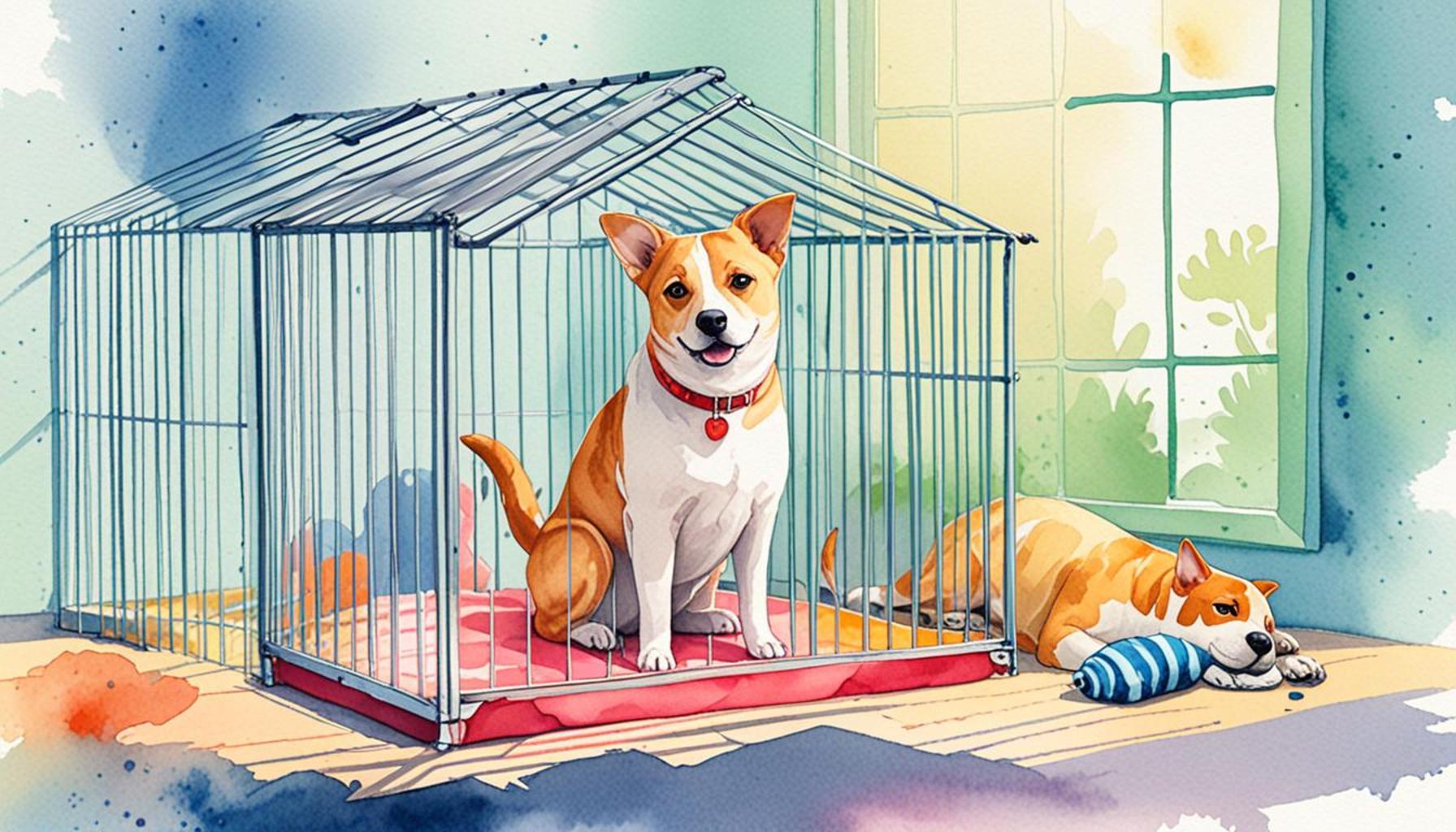How to Handle the Adaptation of an Adopted Pet to a New Environment

The Journey of Your New Furry Friend
Welcoming an adopted pet into your home is often filled with joy and excitement, yet this experience can also present a variety of challenges. Each animal harbors a unique history that can significantly impact how they adjust to their new environment. By appreciating these nuances, you are better equipped to facilitate a positive transition for both you and your new companion.
Key Factors Influencing Adaptation
- Background History: The prior experiences of an adopted pet—whether they were strays, lived in a shelter, or came from a loving home—can greatly shape their behavior. For example, a dog that was mistreated may exhibit fear towards humans, while a cat that was spoiled and pampered might struggle with self-sufficiency. Understanding their past can help you tailor your approach to meet their emotional needs.
- Age: Younger pets, such as puppies and kittens, often exhibit a greater capacity for adaptability compared to older animals. Puppies are typically more resilient and curious, exploring their surroundings with ease. In contrast, older pets may require more time and encouragement to adjust to changes in their lives.
- Temperament: Different breeds come with distinct personality traits that affect their ability to adapt. For instance, Labrador Retrievers are known for their friendly and adaptable nature, while Shiba Inus tend to be more independent and may take longer to trust their new owners.
The adjustment period can vary widely among pets, generally spanning from a few days to several weeks. During this crucial transition, providing a stable and secure environment is paramount. This reassurance allows your furry friend to feel safe and encourages them to embrace their new surroundings with confidence.
Essential Tips for a Smooth Transition
- Create a Safe Space: Designating a specific area in your home where your pet can retreat to feel secure is essential. This might be a cozy corner with their bed and favorite toys, where they can unwind after overwhelming interactions.
- Establish Routines: Setting regular feeding and walking schedules will help your pet anticipate their needs and create a sense of familiarity. Consistency is key; feeding them at the same times daily provides structure, helping to ease anxiety.
- Positive Reinforcement: Utilizing treats and verbal praise to encourage good behavior can significantly enhance your pet’s learning process. For instance, when your dog responds to a command, rewarding them with a treat fosters a positive association, making them more likely to repeat the behavior.
Embarking on this new journey with your adopted pet requires patience and a deep understanding of their individual needs. By investing time and effort into their adaptation process, you are paving the way for a harmonious and joyful relationship that enriches both your lives. Remember, every moment spent nurturing your bond is an opportunity to understand your furry friend better, leading to countless rewarding experiences in the future.
DISCOVER MORE: Click here to learn about the vital role of balanced nutrition in your pet’s health
Setting the Stage for Success
Understanding your adopted pet’s needs begins with recognizing the significance of their environment. As an animal transitions to a new home, various aspects of their surroundings can affect their sense of security and comfort. An intriguing study conducted by the ASPCA highlights that pets, particularly dogs, thrive when they feel safe and have designated areas to retreat to. By taking steps to create a conducive environment, you can help your furry companion navigate the changes ahead with greater ease.
Environmental Considerations
Beginning with the physical aspects of your home, consider the layout and overall vibe of the space. The following factors are crucial in influencing your pet’s adjustment:
- Noise Levels: An adopted pet may be sensitive to new sounds, such as traffic, loud music, or household appliances. A quiet environment free of unexpected sounds can make a remarkable difference in their ability to feel secure.
- Layout: Ensure that your home is pet-friendly and free from hazards. Clear pathways and secure cabinets can prevent accidents and create a safe space for exploration. Additionally, watch for stairs or sudden changes in floor surfaces that could pose a risk, especially for older pets.
- Social Interactions: When bringing a new pet home, it’s essential to monitor their interactions with family members and other pets. Gradually introducing them to different people and animals can ease the stress of feeling overwhelmed by too many new faces at once.
Giving your adopted pet adequate time to acclimate is pivotal. The standard adjustment period varies but typically lasts from several days to weeks. It’s important to remain aware that some pets may take longer to adjust than others. During this phase, patience and understanding are your best tools.
Emotional Support Techniques
Providing emotional support is just as important as ensuring physical safety. Here are several techniques that can help bridge the gap between your pet’s past and their new life:
- Gradual Introduction to Routine: Establishing a daily routine for feeding, walks, and playtime helps your pet know what to expect. This predictability can considerably reduce anxiety and promote a sense of belonging.
- Encouraging Exploration: Allow your pet to explore the space at their own pace. Offer treats and positive reinforcement when they show curiosity about their new surroundings, creating a positive association with their environment.
- Quality Time: Spend the first few days together bonding through gentle interactions like playing, grooming, or simply sitting nearby. This time fosters trust and demonstrates that you are a reliable source of comfort and companionship.
By considering the impact of your home’s environment and using effective emotional support techniques, you create a nurturing backdrop for your adopted pet’s adaptation journey. Remember, every small step you take to understand and support your new furry friend can lead to a fulfilling and lasting relationship, enriching both your lives along the way.
| Category | Key Features |
|---|---|
| Environment Setup | Establish a safe space where your pet can acclimate. Use familiar items to ease the transition. |
| Gradual Introduction | Introduce your pet slowly to different areas of the house. Allow them to explore at their own pace. |
| Routine Development | Create a consistent daily routine to help your pet feel secure and understand their new environment. |
| Socialization Opportunities | Provide chances for your pet to meet new people and animals to develop their social skills. |
Adjusting to a new environment can be a significant challenge for adopted pets, particularly those with a history of trauma or instability. It is crucial to acknowledge that pets like dogs and cats experience stress in new settings. The first step in helping your adopted pet adjust is to set up a dedicated and serene area within your home. This safe space should be equipped with familiar bedding, toys, and food dishes, providing comfort and a sense of ownership.Furthermore, gradually introducing your pet to various areas of your home will promote confidence and security. Unrushed exploration efforts can diminish anxiety levels. It’s also beneficial to develop a structured daily routine for feeding, walks, and playtime, as consistency can offer reassurance. Another important aspect is to provide socialization opportunities that can enhance their adaptability skills. Positive interactions with other pets and people within controlled settings foster a sense of community, easing their adjustment period. Taking these steps can significantly enhance the transitional journey for your newly adopted pet, contributing to their overall well-being and happiness.
LEARN MORE: Click here for essential pet adoption resources
Fostering Positive Behaviors
Once you have established a secure environment for your newly adopted pet, the next step involves fostering positive behaviors that will ease the adaptation process. Understanding your pet’s behavioral needs is crucial as each animal has a unique personality and history that shapes how they respond to new situations. Reinforcing good behavior and managing stressors can significantly contribute to a successful transition.
Training and Socialization
Engaging your pet in training sessions not only builds skills but also strengthens the bond between you. Here are some essential aspects of training that can aid in the adjustment:
- Positive Reinforcement: Utilizing treats and praise can motivate your pet to learn commands and exhibit desirable behaviors. This method is particularly effective for addressing fear-based responses, as pets who are rewarded positively begin to associate new environments with pleasant experiences.
- Basic Commands: Teaching basic commands such as “sit,” “stay,” and “come” can enhance communication between you and your pet. This clarity helps the animal understand what is expected of them in their new home, providing structure during a potentially overwhelming period.
- Socialization Opportunities: Gradually introducing your pet to various people, pets, and settings can help build confidence. Consider organized playgroups or obedience classes tailored for newly adopted animals, as these environments offer controlled experiences for learning and adaptation.
It’s essential to make each interaction as stress-free as possible, allowing your pet to approach new situations at their own pace. This empowerment fosters a sense of control over their environment and significantly enhances their overall confidence.
Understanding Body Language
Another vital aspect of facilitating a smooth transition involves being attuned to your pet’s body language. Pets communicate primarily through their physical expressions. Recognizing signs of stress or discomfort can help you respond appropriately:
- Signs of Stress: Look for behaviors such as excessive panting, tail tucking, or hiding. These indicators often signal that your pet feels overwhelmed and should be given more time to acclimate.
- Relaxed Body Language: Conversely, a relaxed posture—like a wagging tail, perked ears, and playful behavior—indicates comfort. Recognizing these moments can guide you in reinforcing positive experiences that build upon their comfort levels.
- Pet-Specific Trends: Be mindful that different species and breeds exhibit particular behaviors. For instance, a nervous dog might bark or growl, while a shy cat may retreat to high places. Tailoring your responses to each unique behavior can create a more nuanced understanding of their needs.
It’s encouraging to note that many adopted pets experience behavioral improvements over time with proper support. Consistency in your routines and training not only fosters trust but also provides a clear framework within which your pet can feel safe exploring and interacting with their new world.
The Role of Veterinary Care
Lastly, do not overlook the importance of regular veterinary check-ups as part of your pet’s adaptation journey. A visit to the veterinarian ensures that your new companion is healthy and allows for any medical concerns to be addressed early on. Additionally, discussing behavioral issues with your vet can yield tailored solutions or suggestions for supplements that may calm your pet during this transition. An estimated 70% of pet owners observe a marked behavior change following appropriate medical guidance, highlighting the importance of thorough health management.
By focusing on training and socialization, understanding body language, and involving veterinary care, you will create a positive environment that enhances your adopted pet’s ability to adjust and thrive in their new home. Every effort aids in building a loving and trusting relationship that lasts a lifetime.
LEARN MORE: Click here for essential tips
Conclusion
Successfully navigating the transition of an adopted pet into a new environment is a multifaceted process that requires patience, understanding, and proactive engagement. By prioritizing positive reinforcement in training, you foster a trusting bond that encourages your pet to find comfort in their new surroundings. Moreover, recognizing and responding to their body language allows for tailored care, facilitating a smoother adjustment period. Each pet’s unique background means they may respond differently to various situations, making it crucial to approach their adaptation with empathy and insight.
Additionally, consistent veterinary care cannot be overstated. Regular check-ups help identify health concerns that may complicate behavioral adjustments, enabling you to provide the optimal environment for your pet’s emotional and physical well-being. Engaging with qualified professionals can also furnish you with strategies specific to your pet’s needs, reinforcing your ability to decode their expressions and enhance their comfort in what may initially feel like an overwhelming new world.
Ultimately, the journey to a harmonious relationship with your adopted pet is paved with ongoing learning and adaptation on both sides. By investing time and care into their transition, you are not just ensuring their happiness, but also embracing the chance to offer a loving forever home. As you embark on this fulfilling adventure, remember that each small victory—whether it’s a wagging tail, a playful pounce, or a cozy cuddle—marks the milestones in building a lasting bond as you both navigate the beautiful world of companionship together.


